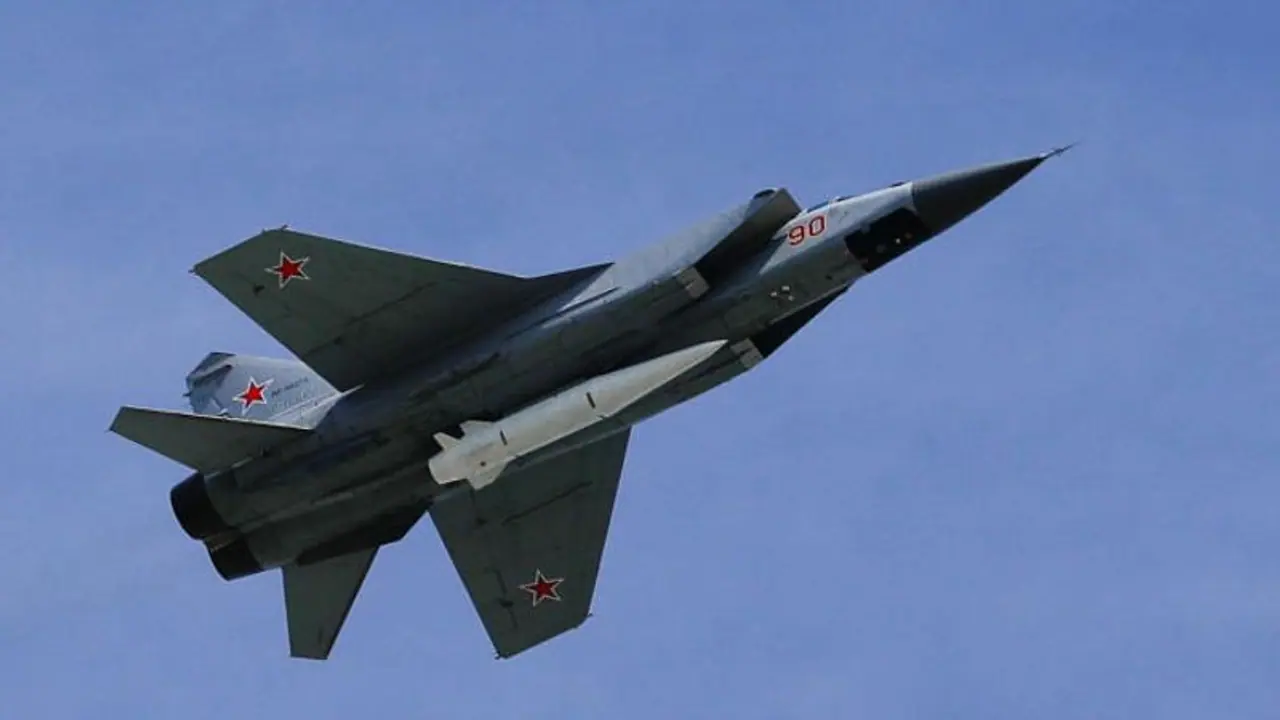Hypersonic missiles have exceptional speed and can avoid interception fora more extended period compared to traditional ballistic missiles. These missiles fly at lower altitudes than conventional ballistic missiles, says Defence and Aerospace Analyst Girish Linganna
On March 9 this year, Ukraine saw one of the most intense bombardments as Russia targeted multiple locations throughout the country. The Ukrainian military reported that hypersonic missiles were used by Moscow during the attacks.

According to the Ukrainian authorities, the missile attacks targeted various locations, including the capital Kyiv and such far-flung regions as Kharkiv and Lviv, resulting in the deaths of at least nine non-military individuals.
Hypersonic missiles have exceptional speed and can avoid interception for a more extended period compared to traditional ballistic missiles. Earlier, Moscow had employed these weapons during the initial stages of the conflict in 2022. These missiles are classified as a distinct type of missile due to their unique characteristics.
UNBEATABLE WEAPONS?
Russian President Vladimir Putin, in 2018, referred to hypersonic missiles as 'invincible' when he revealed his nation's collection of such weapons.
The description of hypersonic missiles as being difficult to intercept by missile defence systems may have been created for propaganda purposes, but it is somewhat accurate.
Hypersonic missiles have unique characteristics that distinguish them from traditional ballistic weapons, making them challenging to detect.
The factors that contribute to this difficulty include speed and altitude.
HOW FAST ARE THEY?
Russia deployed hypersonic missiles called Kinzhals, or daggers, measuring 8 metres in length, during its assault on Ukraine.
Hypersonic missiles travel at speeds ranging from Mach 5 to Mach 10, which is 5-10 times faster than the speed of sound. (The approximate speed of sound is considered 1,230 km/hr when the air temp is 20°C).
However, the speed of sound is determined by a couple of factors -- specifically the medium it travels through and the temperature of that medium. According to some authorities, this missile can travel at a speed of 6,000 km/hr, which is equivalent to Mach 5.
However, other sources claim that it can reach up to Mach 9 or Mach 10. Regardless of the approach, the speed of the weapon is incredibly fast. In reality, it moves so fast that a plasma cloud is formed from the air pressure in front of it, which absorbs radio waves.
The difficulty in detecting Kinzhal and other hypersonic weapons on radar systems is due to their low altitude, making them exceptionally challenging to track.
FLYING AT LOWER ALTITUDES
Conventional ballistic missiles and hypersonic missiles differ in terms of their altitude. Hypersonic missiles, compared to conventional ballistic missiles, fly at lower altitudes. Their trajectory is referred to as a low atmospheric-ballistic path, indicating that they are often too close to their target by the time they are detected by radar-based missile defence systems, making it near-impossible to intercept them.
Additionally, hypersonic missiles have the capability to alter their path during the course of their flight.
WHAT IS THEIR RANGE?
Russia has been using hypersonic missiles in Ukraine, which are launched from airplanes. Ships and submarines are also able to launch various hypersonic weapons, some of which have the capability of holding nuclear warheads.
Kinzhal-category missiles have the ability to strike a target located as far as 2,000 kilometres away. In contrast, most other hypersonic missiles can reach a distance of only 1,000 kilometres.
Several European capitals would be within range of hypersonic missiles if they were based in Kaliningrad, a Russian territory that is not connected to the mainland and which shares borders with Poland, Lithuania and the Baltic Sea.
The distance between Kaliningrad and Berlin, the capital of Germany, is less than 600 kilometres. Therefore, the deployment of hypersonic missiles in Kaliningrad would have significant consequences for European security.
According to certain analysts, even though hypersonic missiles offer several benefits over traditional ballistic weapons, Russia is unlikely to utilize them without discretion. In May 2022, US Air Force General Glen D Van Herck informed a US Senate Armed Services sub-committee that Russia was experiencing difficulties with the precision of some of its hypersonic missiles during the conflict in Ukraine.
